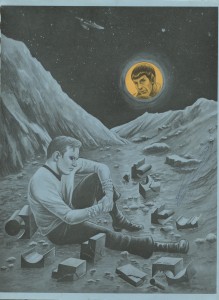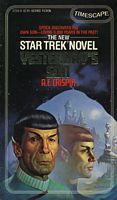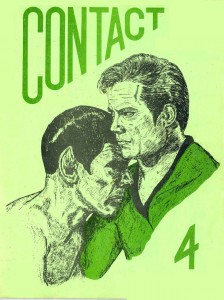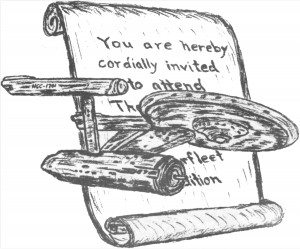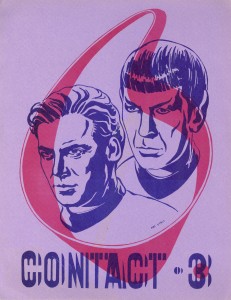By C.R. Faddis
EDITOR’S PREFACE
We were just about to complete this zine when we received the following story. As we read it with a mixture of “pain and delight”, we wondered what to do with it. We had planned to use it in our next issue as we felt it might be a bit much in the same copy as “EULOGY” and we didn’t want to present CONTACT as morbid. And yet, we found it to be such a poignant and powerful vignette, so typical of our theme, that we felt compelled to share it with our readers. Thus we made our decision to include it at this time. Many thanks to Connie and to Carol Frisbie for thinking of us.
The merciless technology of subspace radio caught and reproduced the minutest detail: the throat-torn, mindless screams; the shuddering breaths sucked in between each scream; the gradual decanting of screams into blood-clogged gurgles. The radio could have been turned off, yet no one made a move to do so; it was impossible to listen, but impossible not to. Then, finally the wheezing tapered off and stopped. Spock deliberately relaxed his cramped hold on the seatsides of his chair and glanced at the chronometer. It had taken McCoy a full forty minutes to die. Spock raised his eyes to scan Kirk, but the Captain sat quietly in the command chair, his eyes still tightly closed, his face drawn, but giving no other visible sign of the horror he unknowingly was projecting.
The radio crackled to life. “You will now surrender the renegade Kerl or your Lieutenant Garrovick will be put to death as well.”
Uhura swallowed her sobs, straightening, and pulled herself together enough to transmit the Captain’s reply, but the silence stretched out. Kirk gave no sign of having an answer.
“Enterprise,” the Romulan voice insisted, “your officer is impatiently awaiting your reply.”
Silence ruled. Then, slowly, the Captain doubled over in his seat as though all the life had gone out of him, and he covered his face with his hands. “No,” he rasped, barely audible. “We can’t.”
“Kirk,” the radio demanded, “give us your answer.”
Spock shot out of his chair and punched the transmit button at Uhura’s console. “This is Commander Spock of the Enterprise. Your demand for Kerl cannot be met. Kerl’s request for asylum is fully legal, and we are under obligation to honor it. However, your kidnapping and murder of our officers may well be construed by Federation authorities as an act of war. I strongly advise you to return Lieuteant Garrovick to Federation territory Unharmed. ”
An agonized shriek in Garrovick’s unmistakable baritone erupted from the radio in uncompromising answer. This time, Spock cut the reception, but the cries continued in the minds of the bridge crew regardless. For long minutes, no one moved, and only muffled weeping shocked the utter quiet.
Spock stepped down into the well of the bridge, but hesitated.
“Captain?”
Kirk did what was expected of him. He sat back in the command chair and cleared his face of pain, giving the order to return to the outpost in a dead voice. The bridge crew stirred back to life, laying in the course, engaging Warp Drive, contacting the outpost.
There were routine things to do to absorb the mind. The Enterprise turned from the Neutral Zone in a graceful arc and fled the frown of fortune.
Kirk stared through the viewscreen, but his eyes were blank and dry. He’d sought and tried every alternative, but the single one that would have worked was the single alternative he did not have: Kerl was worth more than the lives of two officers; Startleet would readily have traded an entire starship, crew and machine for the Romulan genius who’d perfected the cloaking device. No, Bones and David had not died without reason. But they had died.
After a million kilometers, Kirk pushed himself to his feet, but his knees betrayed him and the bridge spun away sickeningly.
Spock, who had stood by in supportive silence the whole while, lent real but unobtrusive support now.
“Mr. Scott,” the Vulcan called, “Please take the con.”
Not until the turbolift doors were safely shut behind them did Spock allow Kirk to slump into his arms. He did not take the Captain to Sickbay; he knew instinctively that it would have been the worst choice now. He carried him, instead, to his own quarters. The Romulan, Kerl, passed by in the corridor and turned with the others there to watch the Vulcan and the Human disappear around the bend. Voices buzzed, speculating worriedly, but there were no answers, and Kerl went back to his cabin to meditate.
In Spock’s quarters, the Vulcan eased Kirk into the chair by his desk and knelt beside him, not sure what to do next. Kirk sat limply, as apathetically as he’d lain in Spock’s arms, but the anguish he’d broadcasted earlier had dulled not a bit. Spock winced as ha touched Kirk again, unable to block such intense emotions completely, but he determined to blunt Kirk’s pain with any method he could employ. He positioned his hands on Kirk’s downturned face in the precise placement necessary for editing memories. Jim was listening to those screams, over and over, and the stab of horror slashed into Spock’s guts with real physical pain. The Vulcan hesitated, recovering himself, and in that brief moment he was firmly and angrily pushed away, refused, denied. He dropped his hands and pulled back.
“Jim–” he began, and found no words.
Kirk did not, would not, look at him.
So. The Human was determined to suffer, to punish himself. Spock settled back on his knees to consider. Kirk would not accept Vulcan comfort; Spock barely knew how to give any other. The Doctor’s shrieks ran fresh through his own mind as well, and he wondered fleetingly if he indeed had any comfort to give at all. His own sense of loss was catching up to him. The initial acid banter had long since transmuted into an affectionate repartee. He knew and admitted it, and in doing so, admitted to the grief now. But there had been nothing he could do for that friend; there was, perhaps, a little yet that he could do for Jim.
With exquisite gentleness, Spock reached over to Kirk and unsealed the Captain’s tunic at the neckline, then rearranged Kirk’s arms and drew the shirt off over Jim’s head. Kirk did not react. Spock removed Jim’s black tee shirt, then unfastened the trousers and drew them off too. He put the boots aside and pulled Jim to his feet, leading him into the bathroom, then turned on the shower. He finished stripping Jim and walked him into the stall and scrubbed him down, cleaning the lingering sweat of horror away, trying to ease the tension out of cramped muscles. Jim endured it numbly, not protesting.
Spock turned off the shower and sat Jim on the seat of the commode, toweling off the fine ash of dead epidermis and dirt and wrapping him in a dark Vulcan informal robe that covered him completely, and then some. Spock tenderly combed the tangles out of Jim’s hair, then led him back into the main room, easing him onto the edge of the bed. He pulled the desk chair over, then sat facing Kirk, but did not speak. He had done everything as he imagined one human would care for another, where one was functional and the other was not. It was what McCoy would have done, but McCoy would have known what should be said now, what could reach through the numbness, the denial. Spock sighed mentally. His logic could find no solutions. If open solicitude had no effect…
Without warning, out of the apathetic gloom, Kirk’s shoulders shuddered and he bent forward, folding his hands tightly, beginning to sob.
The sound cut through Spock with anguish and relief. Uncertainly, he touched Jim’s clenched fingers and Kirk grasped his hands tensely, holding onto him, weeping harder.
A scene touched Spock’s memory: Jim’s anguished clasp on McCoy as Edith Keeler was killed. Without thinking, he pulled Jim to him, sliding into a tight mutual embrace, and did not resist the electric grief of it. The water sprang from his eyes perforce and soaked Jim’s hair at the nape, but he did not notice; the linked shock and loss overwhelmed.
Our friend!
Gradually, the meld afforded perspective; the grief was experienced in a sort of parallax, and became manageable. Logic met anguish half way; the very sharing made both priceless, a mutual shoring-up against those pressures which could crush. It is, they thought simultaneously, the solution he proffered for both of us.
The catharsis had left a tremendous lassitude of mind and body. Spock delicately disentangled from the link, and Kirk sank back on the bed, depleted. Spock rose long enough to pull the covers up over Jim’s shoulders, then crawled in beside him, too spent to bother with undressing. As he let sleep take him, he permitted himself the venial luxury of throwing one protective arm across Jim’s chest.
Time would heal those wounds still left.
THE END
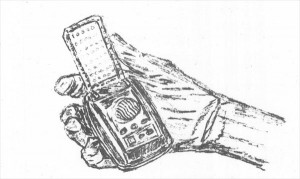
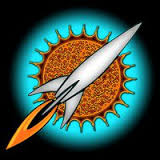 So I’m at Philcon, America’s oldest running science fiction convention. Tonight, I’m doing a panel about fanzines of the past, present and future. A big piece of my agenda in proposing this discussion was to plug something that’s (obviously) very close to my heart: preserving fanzines. For the uninitiated, fanzines are amateur magazines published by people who love some professional work, like Star Trek, Star Wars, Starsky and Hutch, and even some things that don’t begin with the four letters ‘S-T-A-R.’ They love these works so much that they just have to write about them, produce artwork inspired by them, compose songs about them.
So I’m at Philcon, America’s oldest running science fiction convention. Tonight, I’m doing a panel about fanzines of the past, present and future. A big piece of my agenda in proposing this discussion was to plug something that’s (obviously) very close to my heart: preserving fanzines. For the uninitiated, fanzines are amateur magazines published by people who love some professional work, like Star Trek, Star Wars, Starsky and Hutch, and even some things that don’t begin with the four letters ‘S-T-A-R.’ They love these works so much that they just have to write about them, produce artwork inspired by them, compose songs about them.
